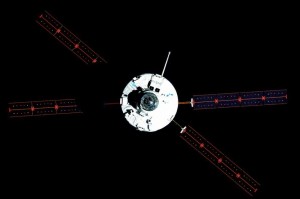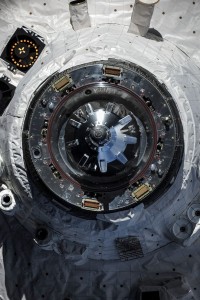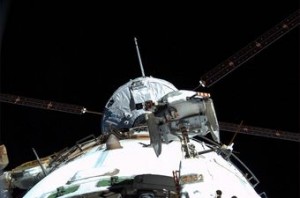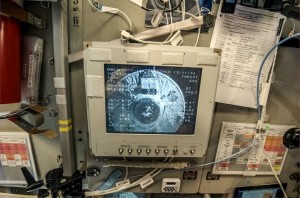After the flawless docking on 12 August, things certainly quietened down a bit at ATV CC, but our work was far from over.
Editor’s note: Blog post contributed by ESA’s Charlotte Beskow
13 Aug Wednesday
The crew entered the ATV for the air scrubbing activity — cleaning the air that is inside the atv. The hatch was closed after this activity.
Aug 14 Thursday
The ISS was reboosted by the ATV in a test reboost, which let our Russian colleagues check the nominal operation of the ATV thrusters. Everything was working as expected.
It is never easy to follow the crew activities inside ATV. We don’t have direct communication with them (ATV has no on-board communication link for crew) but over the years we have learned watch what is happening inside ATV by watching the thermal readings.
In fact, if I was to redo my studies, I think I would become a thermal engineer. It is amazing what thermal engineers can deduce from what seems like a very basic piece of information.
The next activity involved the crew entering the ATV again, to set it up for the nominal attached phase of operations. Well, almost nominal.
Due to an issue on the cargo belts, the direction of the airflow between SM and ATV was modified and some special filters were installed. This was a very successful solution, one which we planned and put into place very efficiently.
Consequently the EST (ATV Engineering Support Team) specialists were glued to their screens, analysing every little variation in fan speed and temperature. We also relied on a few other, probably unexpected, readings like the changing state of the pressure valves on board ATV.
Aug 15 Friday
This was a ‘quiet day’. The only thing we had to observe was the feathering of ATV Solar Arrays when Cygnus departed the ISS. This is done to protect them in case the departing vehicle suddenly and rapidly accelerates.
Aug 16 Saturday
This was a very quiet day, as in relatively silent despite how busy we were. The teams in ATV CC patched the ATV SW (software). Normally there is quite a lot of talking during operations but on this morning everyone present was 100% concentrated on the procedure.
It was a first for us. The FAS (Flight application software)) patch process had been validated in an end-to-end system validation test before the first flight. This particular patch had been validated in Les Mureaux only a week before this activity at the test facilities there, and now we were doing it on the vehicle.
As with most things that have been very well prepared, this went incredibly smoothly. The patch was tested again on the 18 August during the propulsion activation for CMG (Control Momentum Gyros).
Aug 17 Sunday
Towards the end of the afternoon we were back in ATV CC. Crew were ready to close the ATV and ISS hatch in preparation for the upcoming Russian space walk (EVA) on 18 August.
This is a standard procedure, but it meant configuring ATV so that it could undock from the ISS if necessary. We were again glued to our screens—reading heat and pressure, following as best as we could what was happening.
At the end of the day ATV was closed, the fan was OFF and the inert hatch vestibule (the space between ISS and ATV hatches) depressurised.
Aug 18 Monday
This was the day of the Russian EVA. ATV was activated to provide propulsive support in case it became necessary to desaturate the CMGs (Control Momentum Gyros) used to maintain ISS attitude.
The EST was present in force, eager to see that the SW patch had worked. The four chains of the propulsion system were activated nominally and then we waited. After many hours, ATV was returned to dormant mode.
The propulsion chain had not been used. Never mind. With the activation of the four chains we knew the patch had worked. The quiet evening also gave us the nice opportunity to celebrate the birthday of one of our EST team members.
Aug 19 Tuesday
The crew entered the ATV and set it up for the attached phase operations. By the time this was complete, the crew day was already over. Because of time constraints, and our planned cargo activities the following morning, we all agreed to postpone the reverse airflow procedure.
Aug 20 Wednesday
The crew unloaded more cargo from the ATV and complimented us on the cleanliness of our vehicle, after which they set the airflow configuration back to nominal mode.
At the end of this day, eight days after docking, we were proud to say that ATV was now returned to a completely nominal configuration.
Charlotte Beskow- ATV CC





 Automated Transfer Vehicle page
Automated Transfer Vehicle page ATV blog archive
ATV blog archive
Discussion: one comment
Good job. Thank you for sharing with us. keep it up.